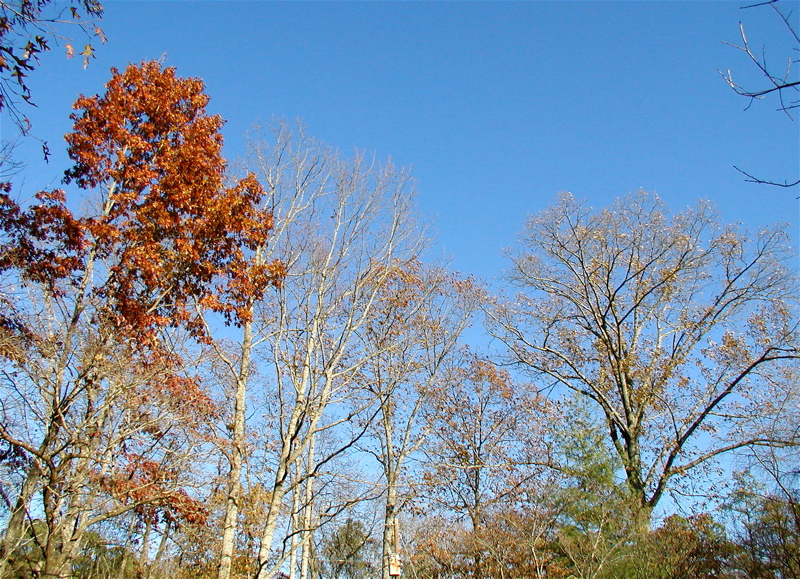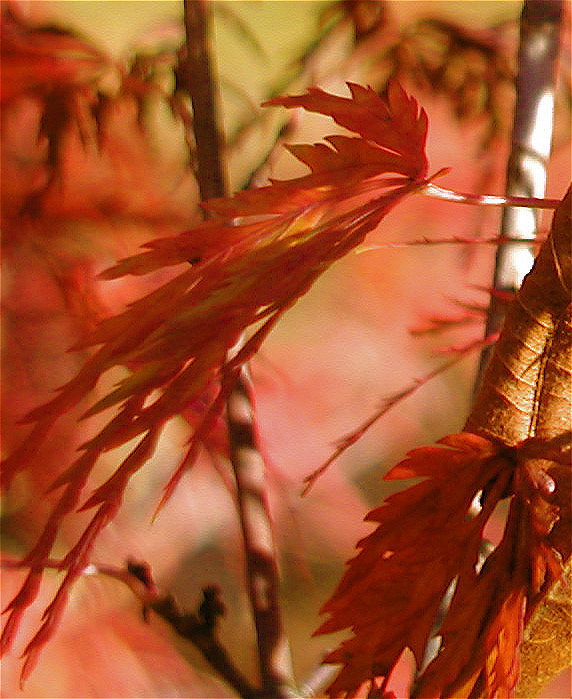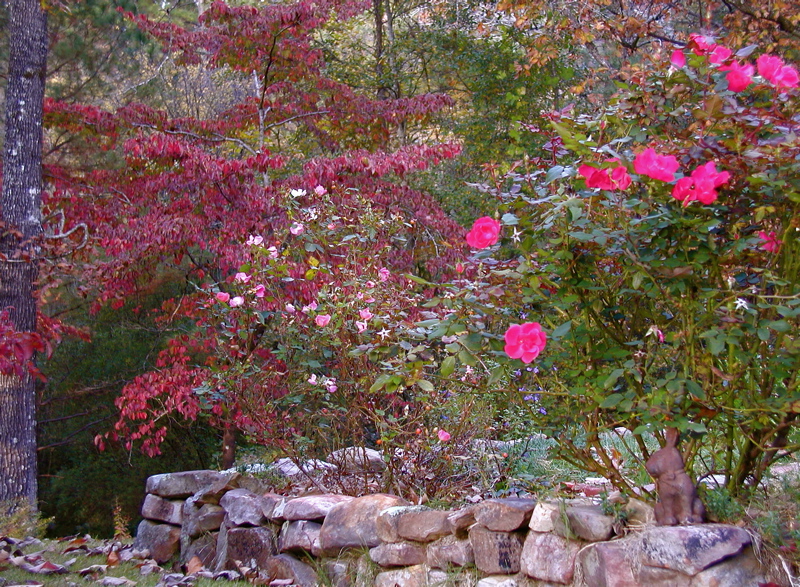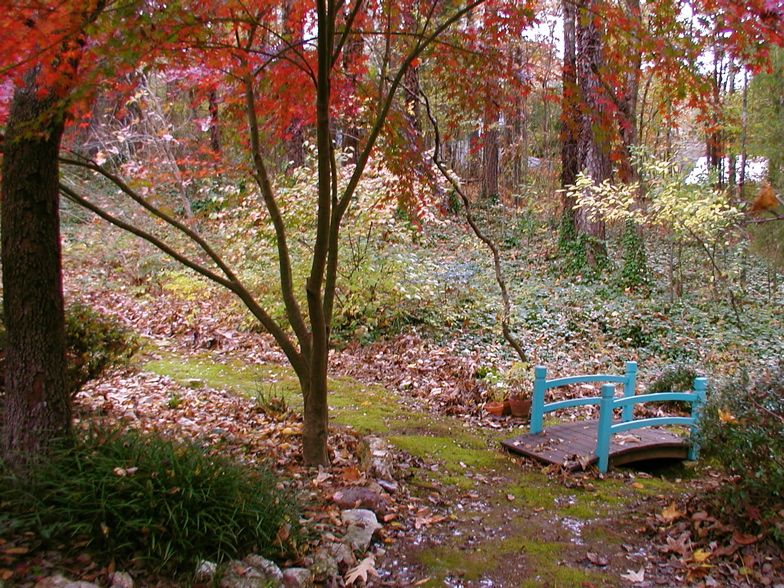The End of Fall
 Saturday, December 11, 2010 at 6:20PM
Saturday, December 11, 2010 at 6:20PM Fall clings to the landscape, though the leading edge of winter has arrived here in Helena. Icy winds have stripped most deciduous trees of their color, if not entirely of their leaves, and many plants are dormant, vital under the comfort of the soil but leaving brown carcasses of their former selves above.
I have watched the end come, watched the colors blaze and then fade. Changes have come quickly over the past two weeks.
Acer palmatum dissectum 'Seiryu' was the last Japanese maple to show its fall colors, and even now this tree is brilliant against the drab colors of its neighbors.
Other Japanese maple leaves are barely holding to their branches or are already fallen:
After several hard frosts, some knockout roses in the herb bed still bloom. Here is what they looked like only two weeks ago:

During the week of Thanksgiving the woodland garden was bordered in warm shades of gold and tan:
The Japanese maple 'Orido Nishiki" was a blaze of color over the blue bridge:
This week there were sharp shadows in the cold air of the woodlands. Colorful leaves still clung to 'Orido Nishiki', contrasting with the bright green of the moss path. I think after this weekend they will be gone.
Southern magnolia leaves stand out against the trunks and branches in the woodlands behind them. I will use leaves like these in some of my Christmas decorations:
The end of fall is not ugly. There is a stark beauty in naked limbs and dried seed heads, and there is still plenty of color in evergreen foliage and winter blooms and berries:1st row: Camellia 'Leslie Ann'; Nandina domestica. 2nd row: Decorative kale; Daphne odora 'Marginata'. 3rd row: Viburnum carlesii, fall foliage; Old azalea, unknown variety. 4th row: Rose hip, 'Penelope'; Skeletal remains of onion chives.
Winter may stamp out the last of fall tonight, as temperatures fall far below freezing. I won't be sad. I have a new coat, and I know this is true: We play with winter here. We build fires in our fireplaces and eat hot homemade soup. We celebrate Christmas and New Years and watch lots of football. We wonder if there may be snow. We curl up with our lovers, and if there is no lover there is always a good book or movie. We sometimes complain as much as Northerners, who know winter in its truest and harshest form, but in a couple of months we'll be talking about spring. And that is something to look forward to!

